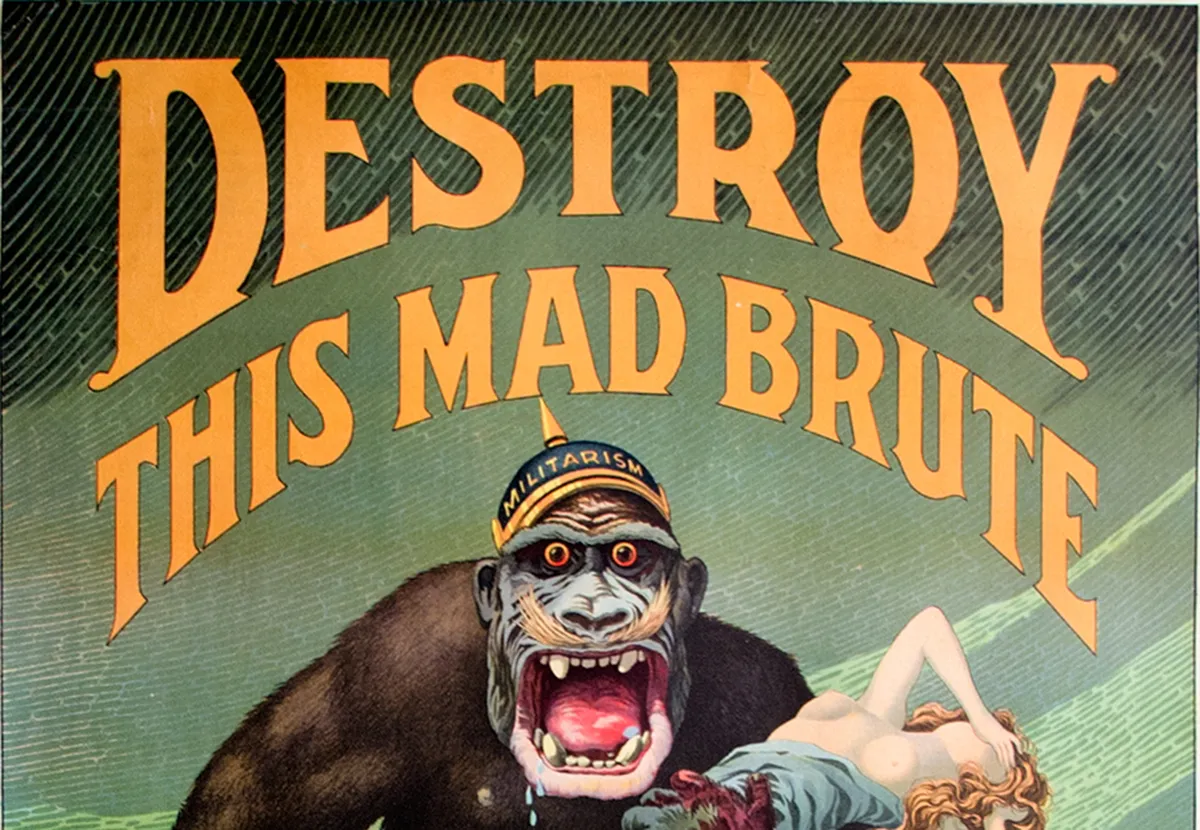Truth might be the first casualty of war, but propaganda is one of its first beneficiaries and its handmaiden. No war is ever fought with bullets and bombs alone. Or even swords and spears — after all, would the Greeks have rallied to the cause if Agamemnon had just said, “Hey, Menelaus’ missus ran off with some Trojan bloke, the tart”? With the advent of mass media, propaganda has become altogether pervasive.
You might think that we’d have started to cotton on by now, but as the wars of the last decade, from Iraq I to Ukraine, show, the same old propaganda tropes are played out again and again — and we fall for them every time.
Think of the Women and Children!
From the instant the Kaiser’s war machine rolled into “poor little Belgium” (what the Congolese, for instance, thought of Belgium was never considered), the English press in particular worked themselves into a frenzy over the alleged outrages of the “Huns”.
The English public believed the narrative that German soldiers were so inhumanly cruel that they made a game of tossing Belgian babies into the air and catching them on their bayonets. It worked so well that similar propaganda was used in America to drag the U.S. into the war as well.
It might have been thought that there were atrocities enough in Belgium, including mass executions and widespread rape, including nuns. But, as Tolkien would later write, “evil truth was enhanced and poisoned by lies” in order to inflame hearts — and fill recruiting queues — with righteous indignation.
We see this pattern emerge in almost every modern conflict with photos of child victims, usually with whatever new evil enemy we must fight in a distant foreign land. Oftentimes, these images turn out to be staged, faked, or doctored. Sometimes photos of real child victims are used but from an unrelated disaster. If nothing else the photos are real and presented accurately but are still used to involve Americans in conflicts that the public, although sympathetic, has no interest in joining.
In 1990, a teenage Kuwaiti girl named Nariyah tearfully testified how she saw Iraqi soldiers tossing babies out of humidicribs to die. Even worse, the soldiers mocked President Bush!
As was later revealed, Nariyah was in fact the daughter of the Kuwaiti ambassador and the whole testimony was made up — but the job of persuasion was already done.
Demonization
It’s never enough that the enemy is often malicious — they have to be blood-crazed lunatics as well. But even Hitler was not (completely) insane: however terrible their designs, they always had their own logic, however evil that may be. But conceding that the enemy has an agenda is to concede that they might be reasoned with.
Thus Putin is not just another Russian leader paranoid about foreign encroachment, he is a mad, murderous new Hitler, who positively delights in killing. Sure, accusations of assassinating enemies may be true (but that, apparently, is different from drone-striking a jihadi in Pakistan), but it’s also part of the constant pattern of wartime propaganda.
Threat of Expansion
Also known as “fight them over there so we don’t have to fight them over here” propaganda. This is another common theme.
Rachel Wilson
In Peter Weir’s Gallipoli, there is a surreal scene where the eager young recruits explain to a wizened bushie in the remote wasteland of Western Australia, that, if “We don’t stop them there, they could end up here”. The perplexed bushie stares at the desert around them: “And they’re welcome to it.”
Occasionally, the narrative has some truth: Hitler’s annexation of the Sudetenland was indeed just the beginning of German expansion. On the other hand, three decades after the Vietnam War, then-Secretary of Defense Robert McNamara repudiated the Domino Theory narrative that was the US’ prime casus belli.
The narrative now is that, if Putin isn’t stopped in Ukraine, Poland, even Germany, Europe or the whole world, is at threat. Whether that’s true is irrelevant: what’s important is its power as a tool of persuasion in the propaganda war.
Preservation of Liberal Democracy
The “democratic values” argument perhaps reached its peak in the “War on Terror”. The initial, concrete, goal of destroying al Qaeda’s training camps in Afghanistan was quickly subsumed in a grand crusade to bring democracy, feminism and Pride parades to Kabul and Baghdad.
Again, the admixture of truth and lies (yes, jihadis really do “hate us for our freedoms”: liberal democracy, feminism and gay rights are all values utterly despised by the Salafists driving the global wave of Islamic terror) only makes the propaganda more potent.
Especially when, as in the case of Ukraine, it’s almost entirely lies. Ukraine is most assuredly not a fight for liberal democracy: Ukraine was very far from a free country even before the war. Its lionised president is just another Eastern European authoritarian with fat overseas bank accounts, who jails his opponents and silences all critical media.
So, before we’re subjected to yet another nauseating rendition of that revoltingly saccharine, hypocritical Boomer dirge, Imagine (seriously: how does “imagine there’s no countries” square with “I stand with Ukraine”? The two statements are logically incompatible), step back and ask yourself: who’s lying to you this time, and why?









